Why you can trust Tom's Hardware
Comparison Products
The 2TB Corsair MP600 GS faces the WD Black SN770, the Crucial P3 Plus, the Solidigm P41 Plus, and the Corsair MP600 Pro XT, all at 2TB. 1TB competitors include the Samsung 980, the HP FX900, and the Patriot P400. All but the MP600 Pro XT and 980 are within the same class of drive as the MP600 GS with the former being high-end and the latter PCIe 3.0. The P41 Plus and P3 Plus also stand out as the only QLC-based drives in the list.
Trace Testing - 3DMark Storage Benchmark
Built for gamers, 3DMark’s Storage Benchmark focuses on real-world gaming performance. Each round in this benchmark stresses storage based on gaming activities including loading games, saving progress, installing game files, and recording gameplay video streams.
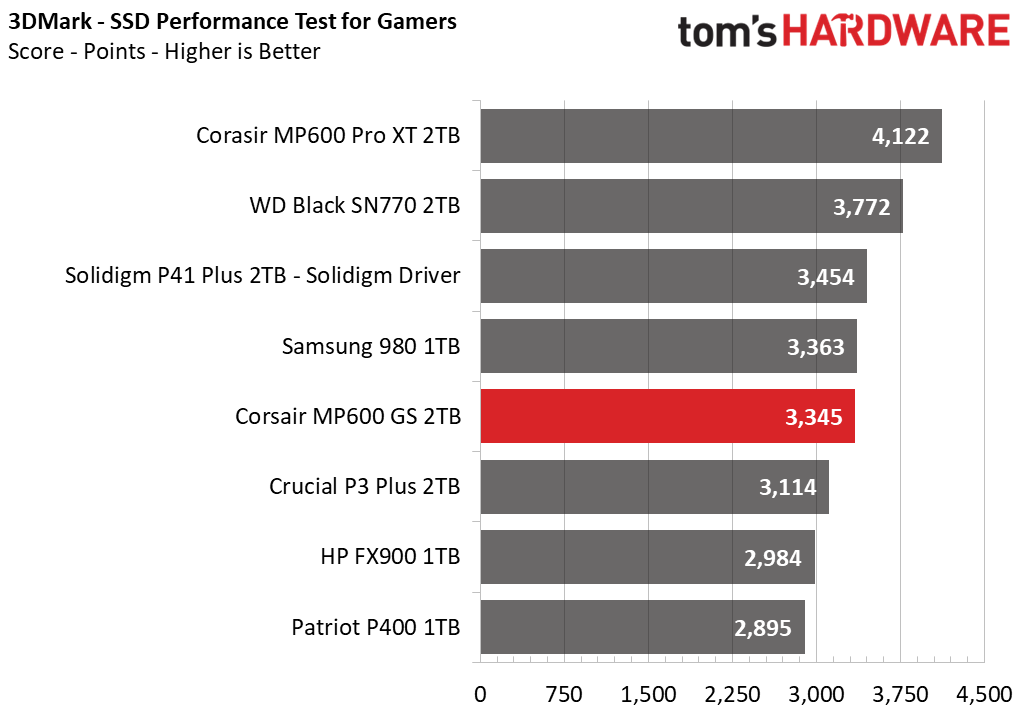
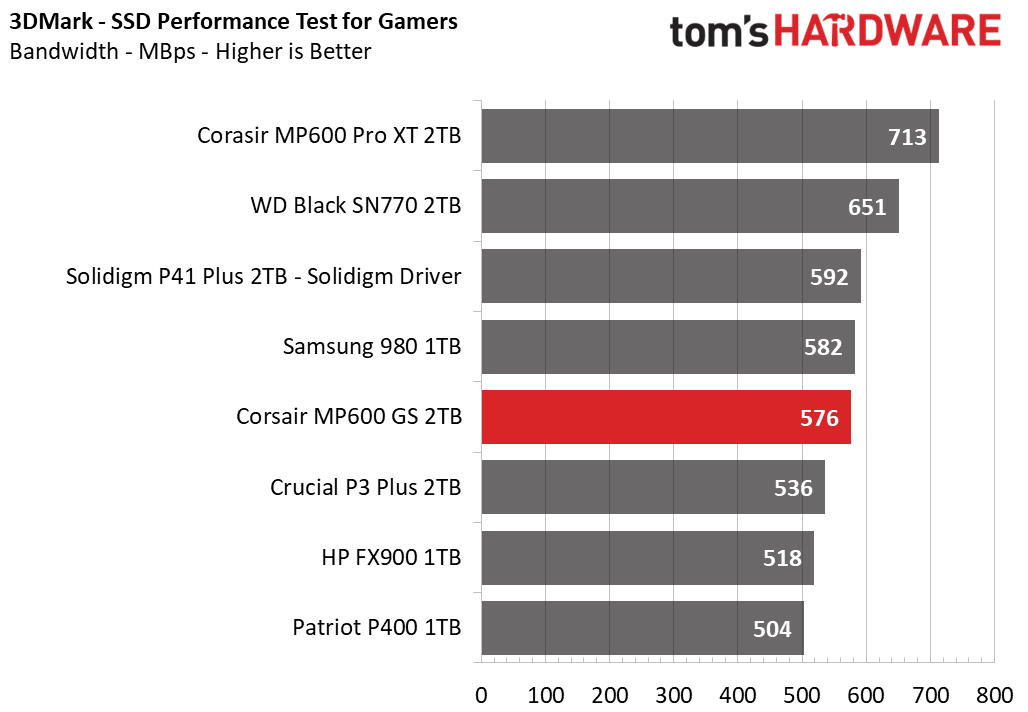
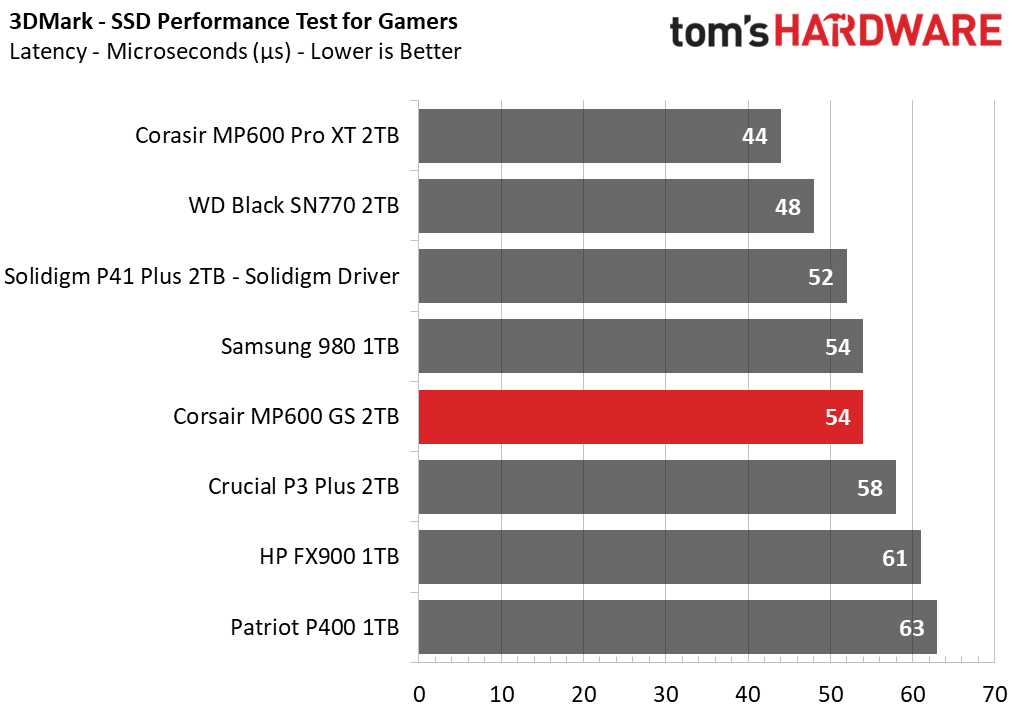
The MP600 GS delivers mediocre marks in 3DMark. On the whole, there are only two in-class drives that beat it: the Black SN770 and the P41 Plus. The Black SN770 remains an amazing drive. The P41 Plus only barely edges out the MP600 GS, but it’s a QLC option that’s cheaper than both the MP600 GS and the SN770. The 980 is merely average here, but this is a good showing for a PCIe 3.0 SS
Trace Testing – PCMark 10 Storage Benchmark
PCMark 10 is a trace-based benchmark that uses a wide-ranging set of real-world traces from popular applications and everyday tasks to measure the performance of storage devices.
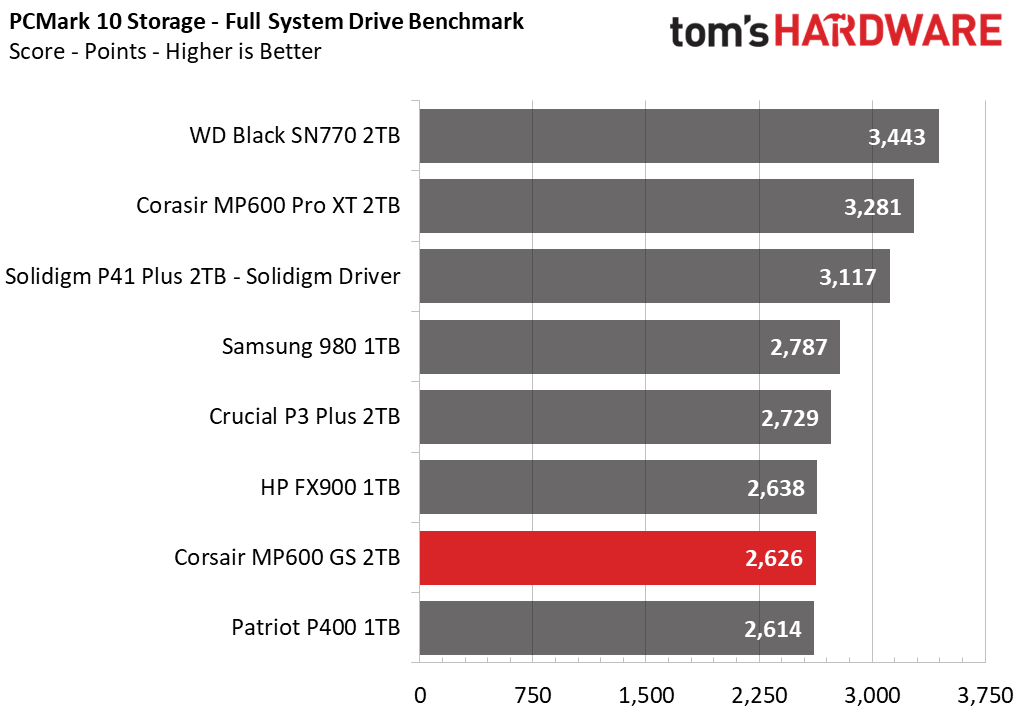

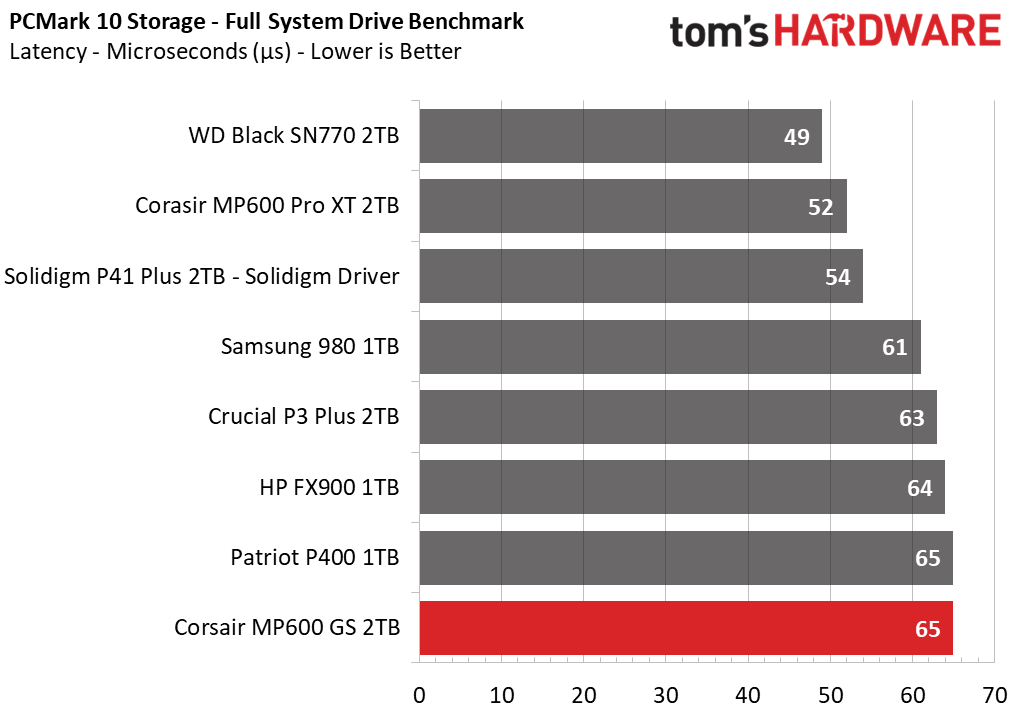
The MP600 GS does poorly in PCMark, although it’s not really far off from most of the drives tested. Once again the Black SN770 and P41 Plus stand out. At least some of this is from firmware optimization. Even if the results do not demonstrate a direct performance relationship, they do reflect an intention of designing a drive geared toward a better real world experience.
Transfer Rates – DiskBench
We use the DiskBench storage benchmarking tool to test file transfer performance with a custom, 50GB dataset. We copy 31,227 files of various types, such as pictures, PDFs, and videos to a new folder and then follow-up with a reading test of a newly-written 6.5GB zip file.
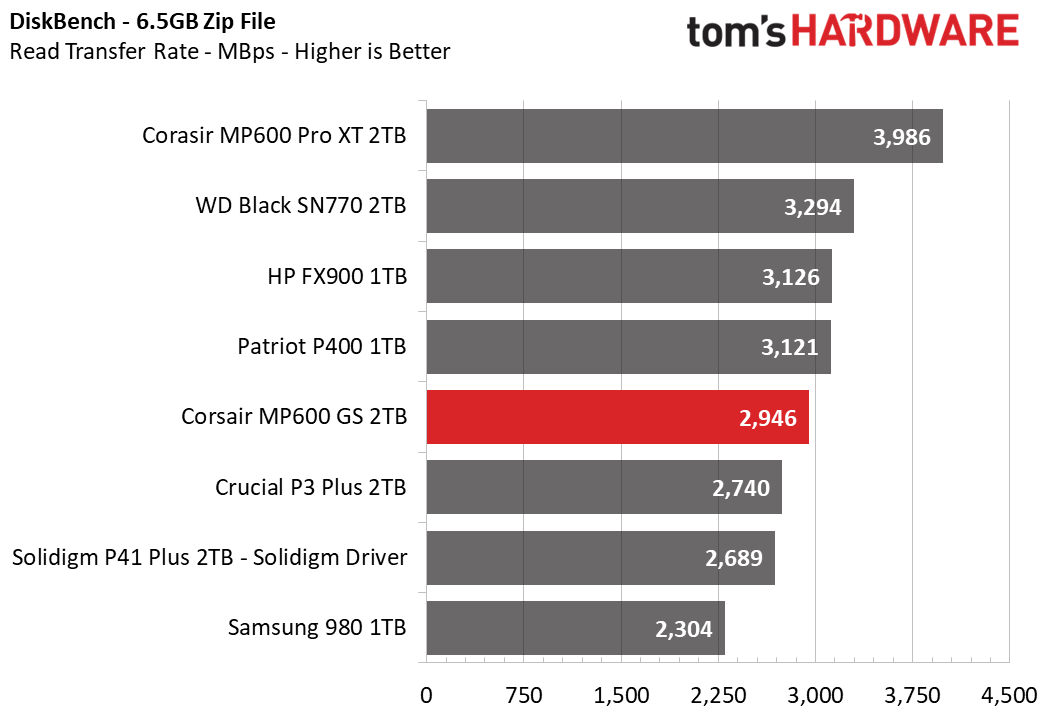
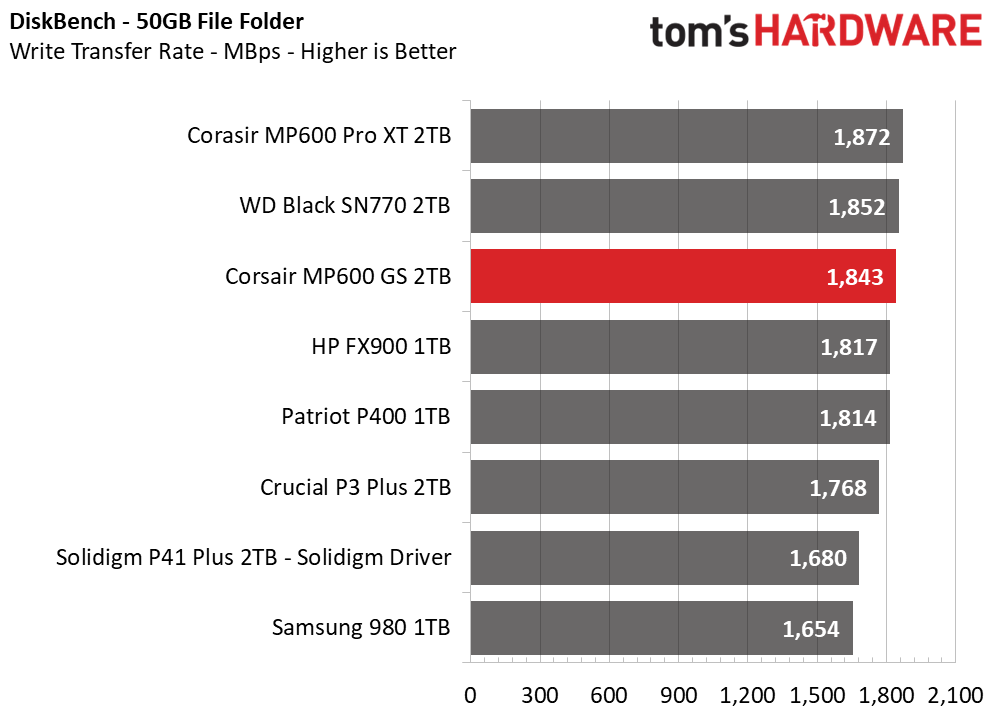
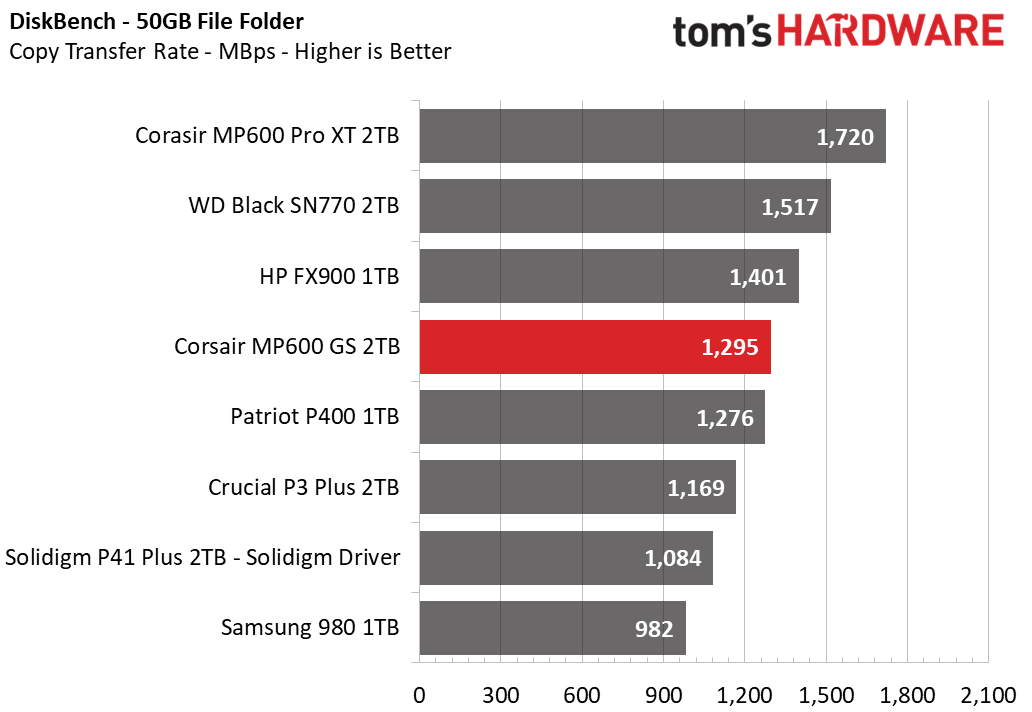
The MP600GS is above average in DiskBench, but it’s essentially on the same page as competing drives like the FX900 and P400. The Black SN770 has traditionally done well on this test, too. The MP600 Pro XT easily pulls away.
Get Tom's Hardware's best news and in-depth reviews, straight to your inbox.
Synthetic Testing - ATTO / CrystalDiskMark
ATTO and CrystalDiskMark (CDM) are free and easy-to-use storage benchmarking tools that SSD vendors commonly use to assign performance specifications to their products. Both of these tools give us insight into how each device handles different file sizes.
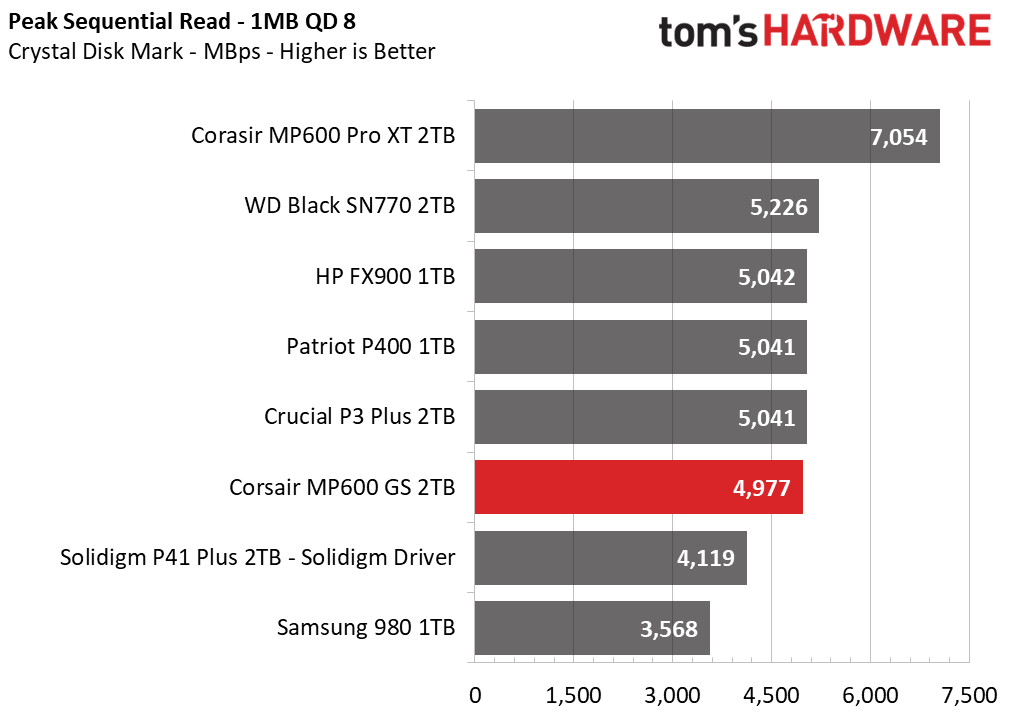
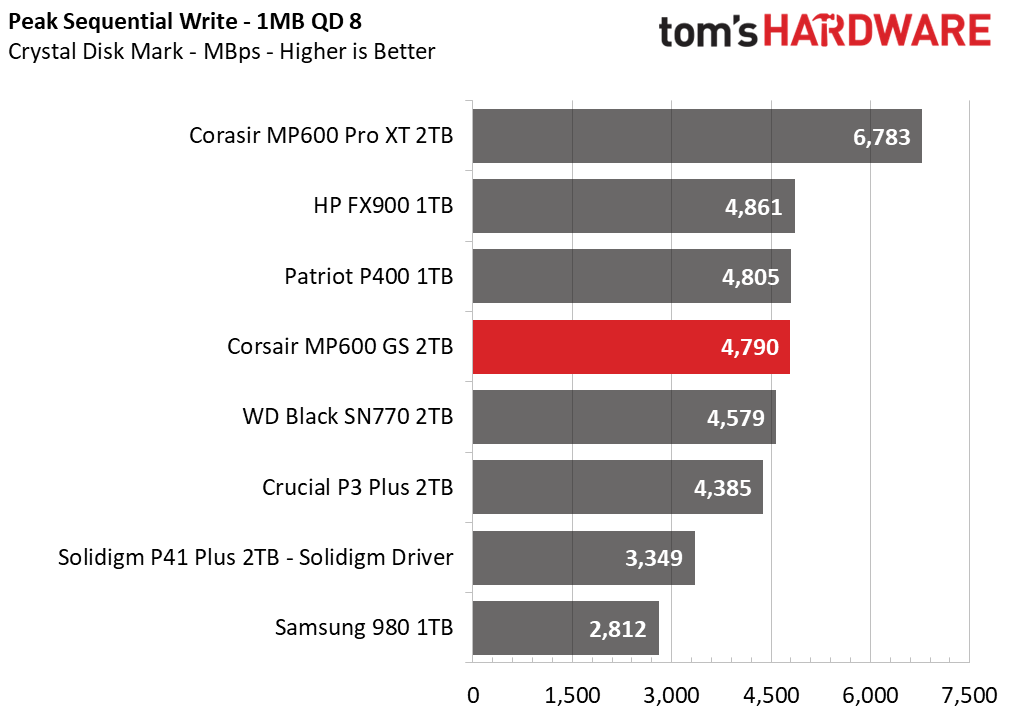
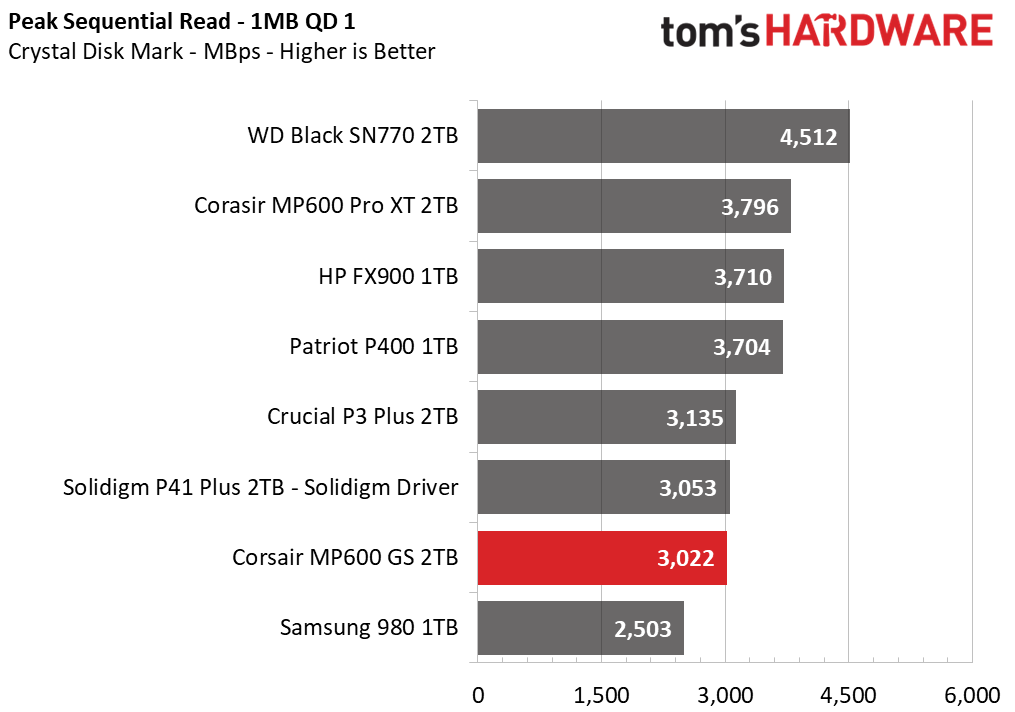
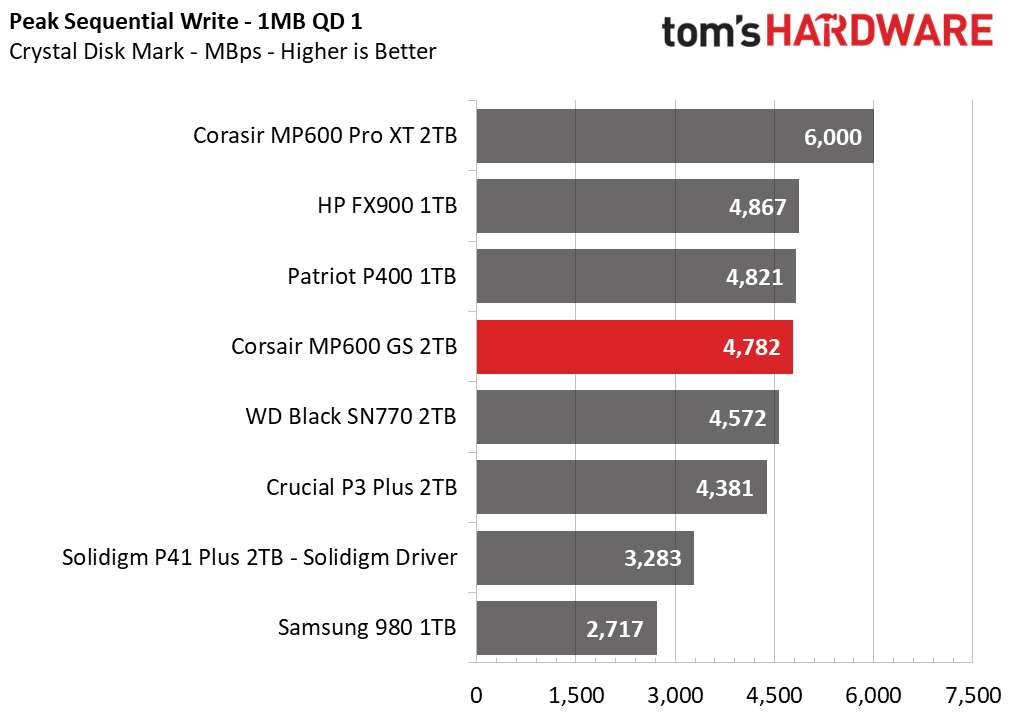
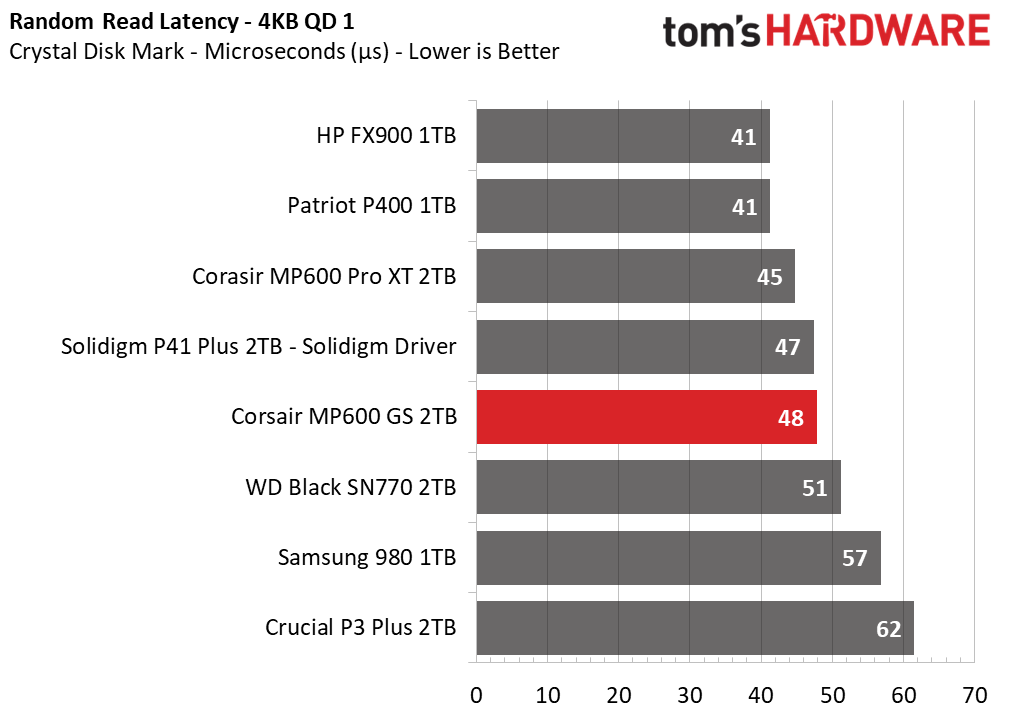
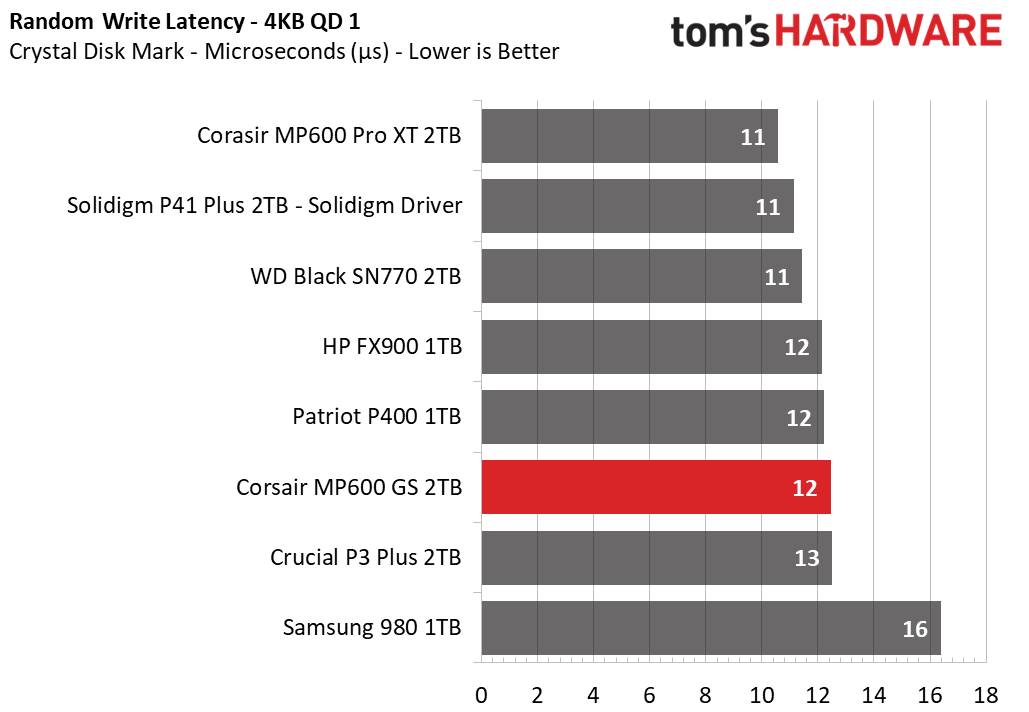

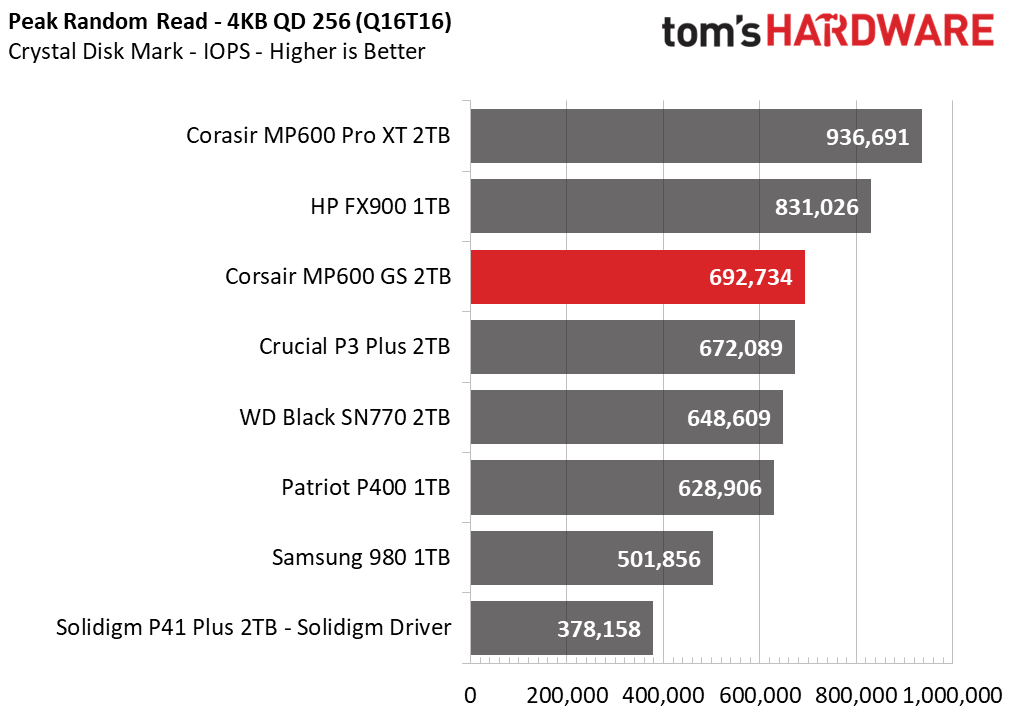
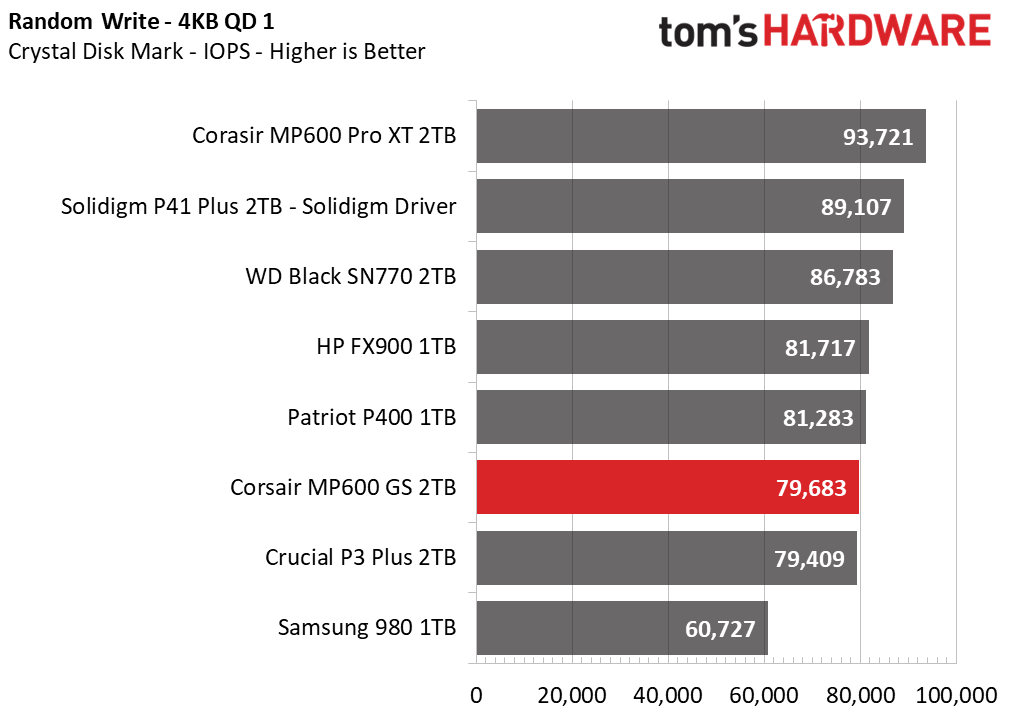
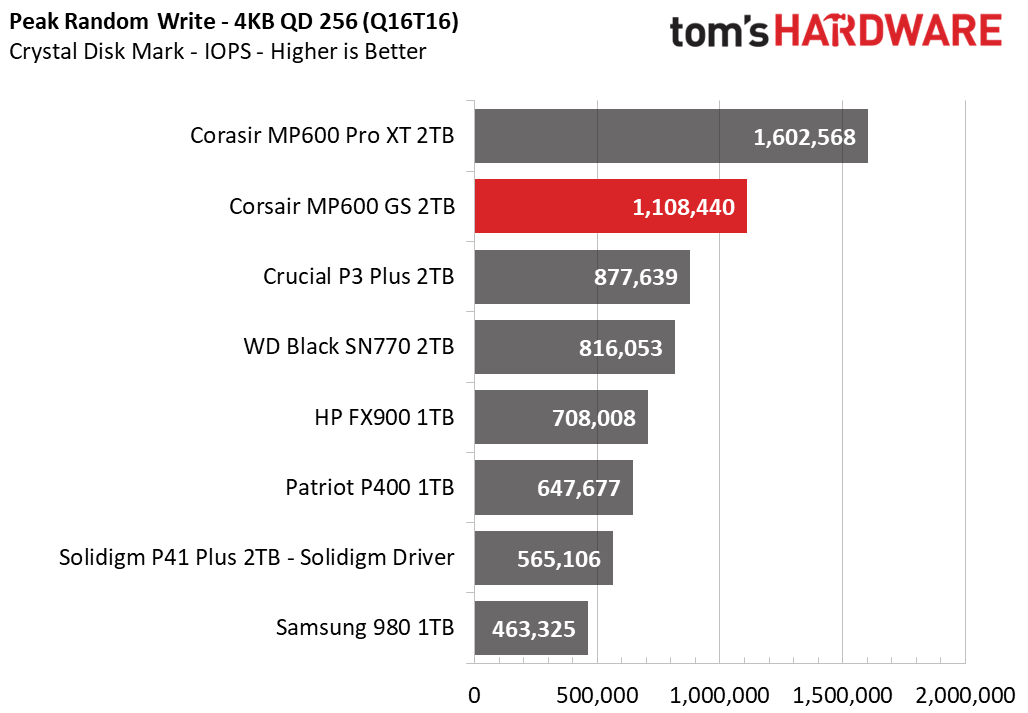
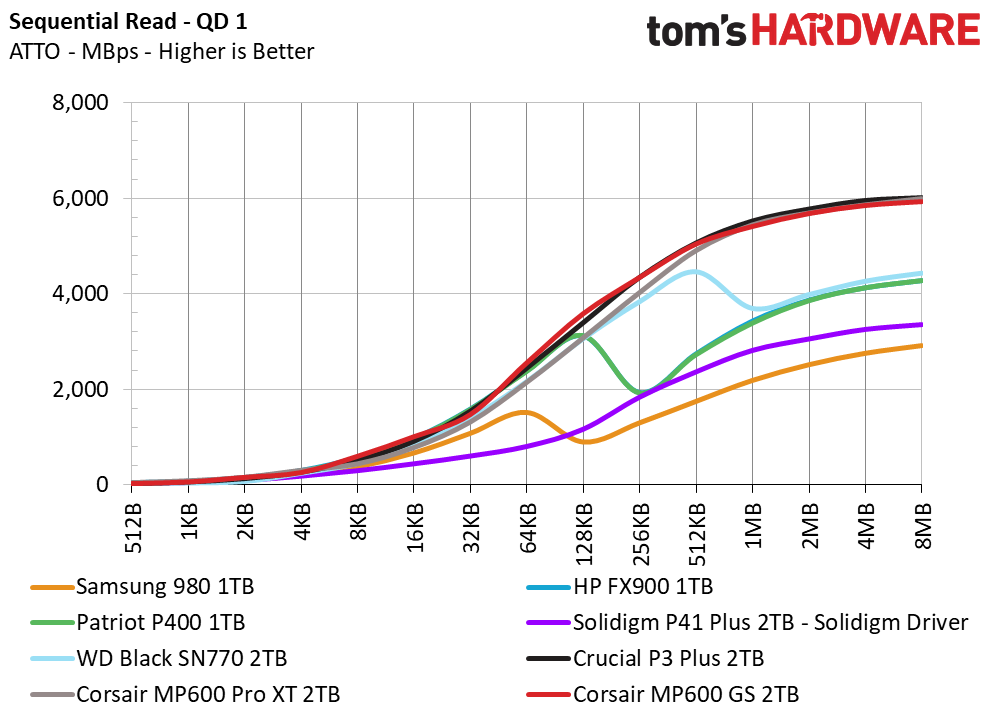
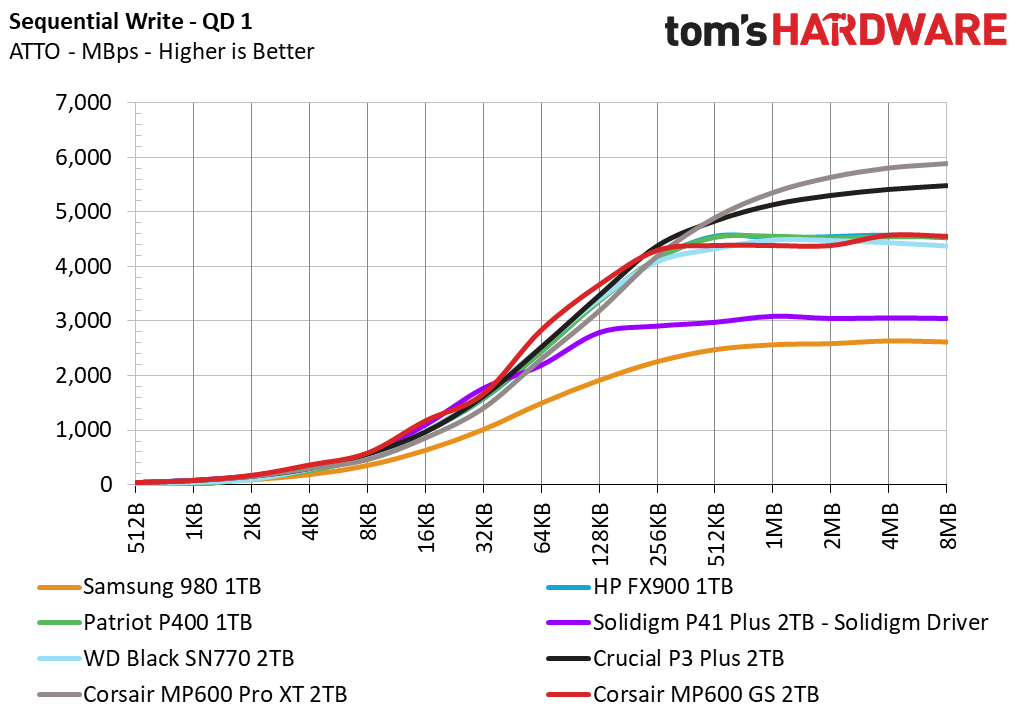
Read results from ATTO are stellar on the MP600 GS, as we would expect from Phison controllers. This also applies to the P3 Plus and the MP600 Pro XT. ATTO writes are more subdued, limited to some extent by the controller interface, with the MP600 XT Pro pulling easily ahead again. We have actually seen anomalies in ATTO testing with some Phison drives that have been confirmed by other review sites. Things are more clear with CDM.
CDM sequential performance for the MP600 GS is as expected - right with the rest of the pack, except the MP600 Pro XT. The exception is with QD1 read, where the SN770 pulls away and the MP600 GS falls a bit behind. As the MP600 GS is holding right with the P3 Plus and P41 Plus, here, it’s likely a facet of the Phison E21T controller. The InnoGrit IG5220 controller, used on the FX900 and P400, is faster.
The drive’s 4K performance is mediocre, particularly at a low queue depth. This is one area in which the IG5220 is simply superior, scoring well with reads, which remains an important benchmark. One standout here is the P41 Plus, which manages to have slightly better latency despite using QLC. Part of this is due to SLC caching and part possibly due to optimizations for reads with Solidigm’s 144-layer QLC, but it also suggests that Solidigm tunes its drives carefully for client use.
Sustained Write Performance and Cache Recovery
Official write specifications are only part of the performance picture. Most SSDs implement a write cache, which is a fast area of (usually) pseudo-SLC programmed flash that absorbs incoming data. Sustained write speeds can suffer tremendously once the workload spills outside of the cache and into the "native" TLC or QLC flash. We use Iometer to hammer the SSD with sequential writes for 15 minutes to measure both the size of the write cache and performance after the cache is saturated. We also monitor cache recovery via multiple idle rounds.
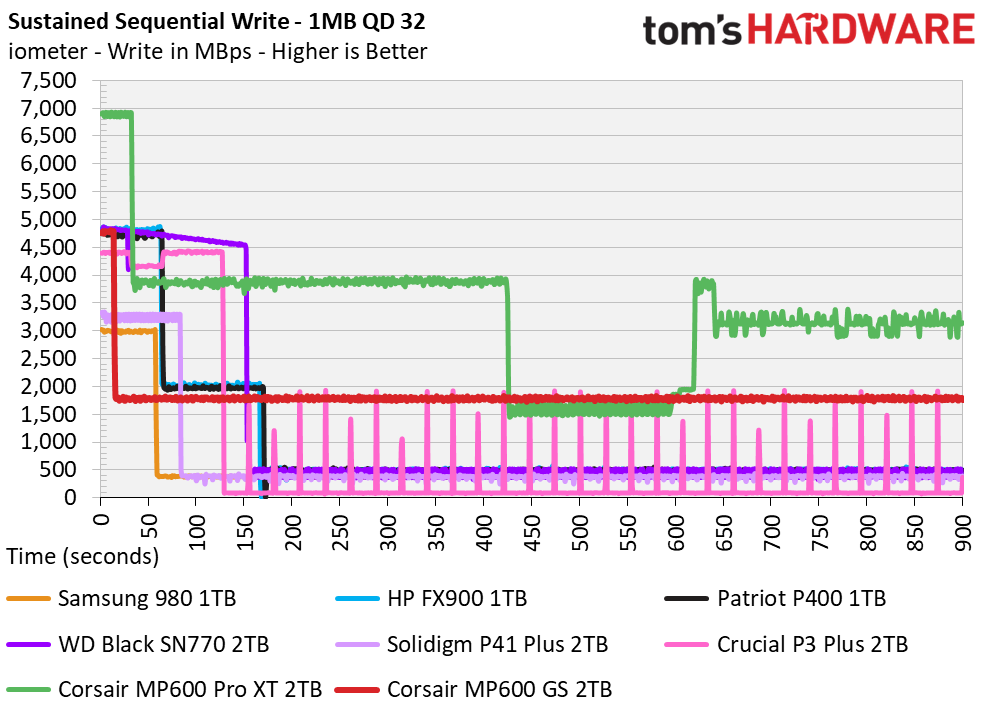
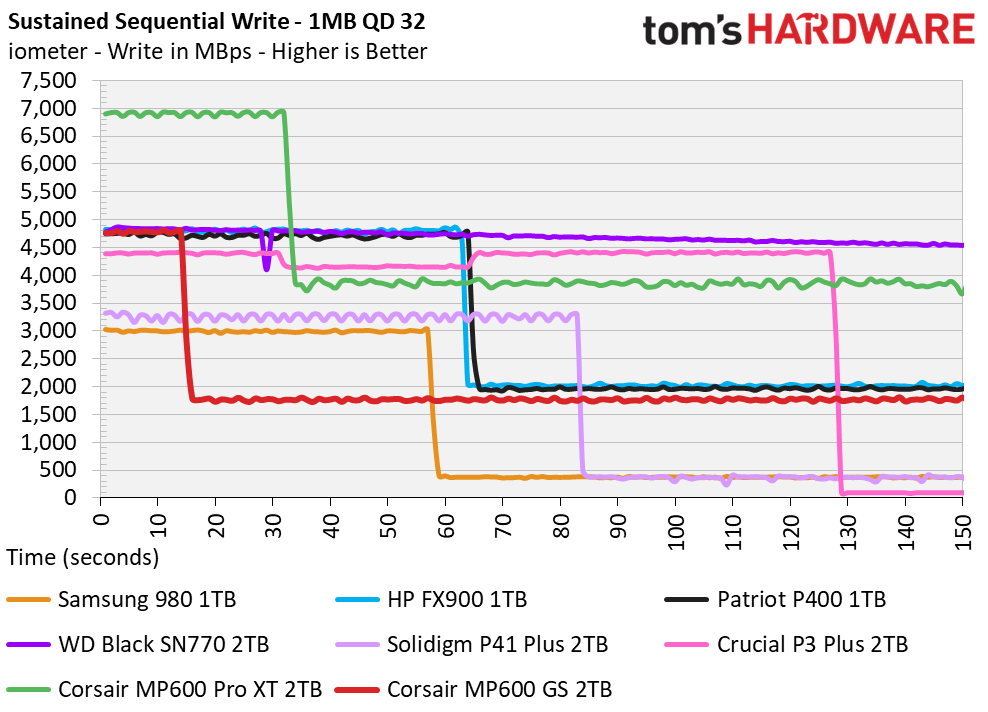
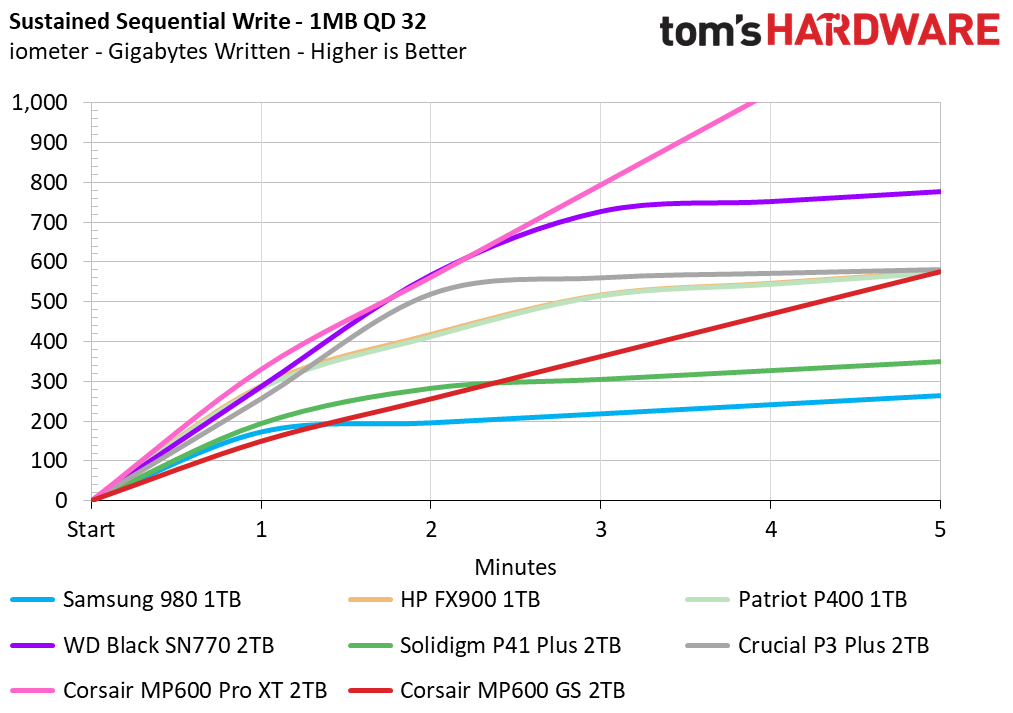
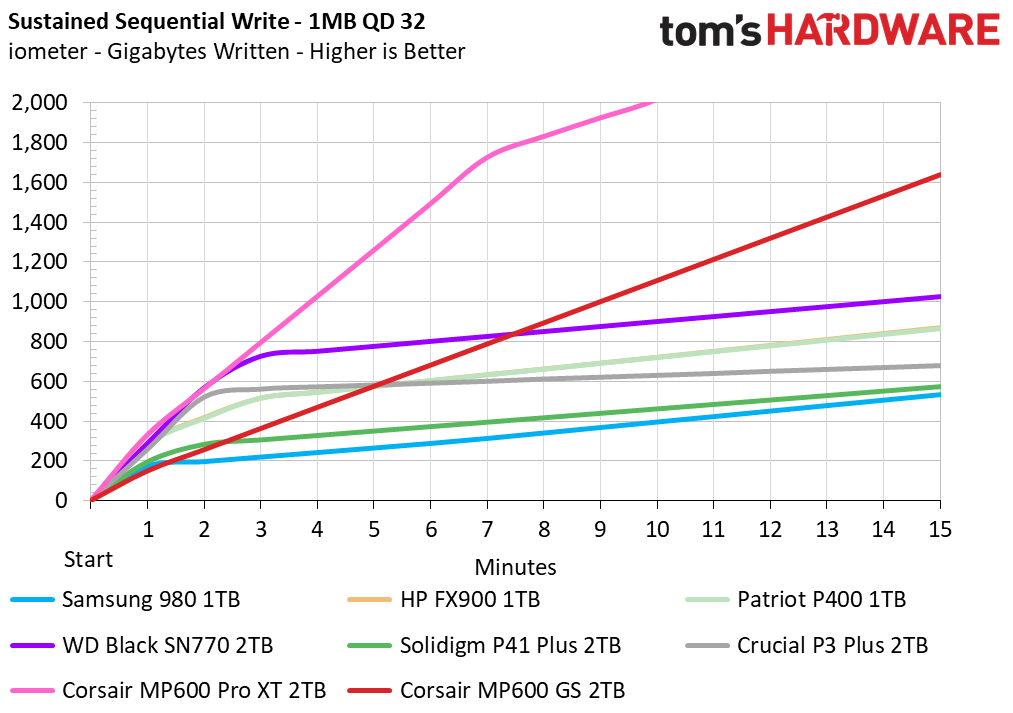
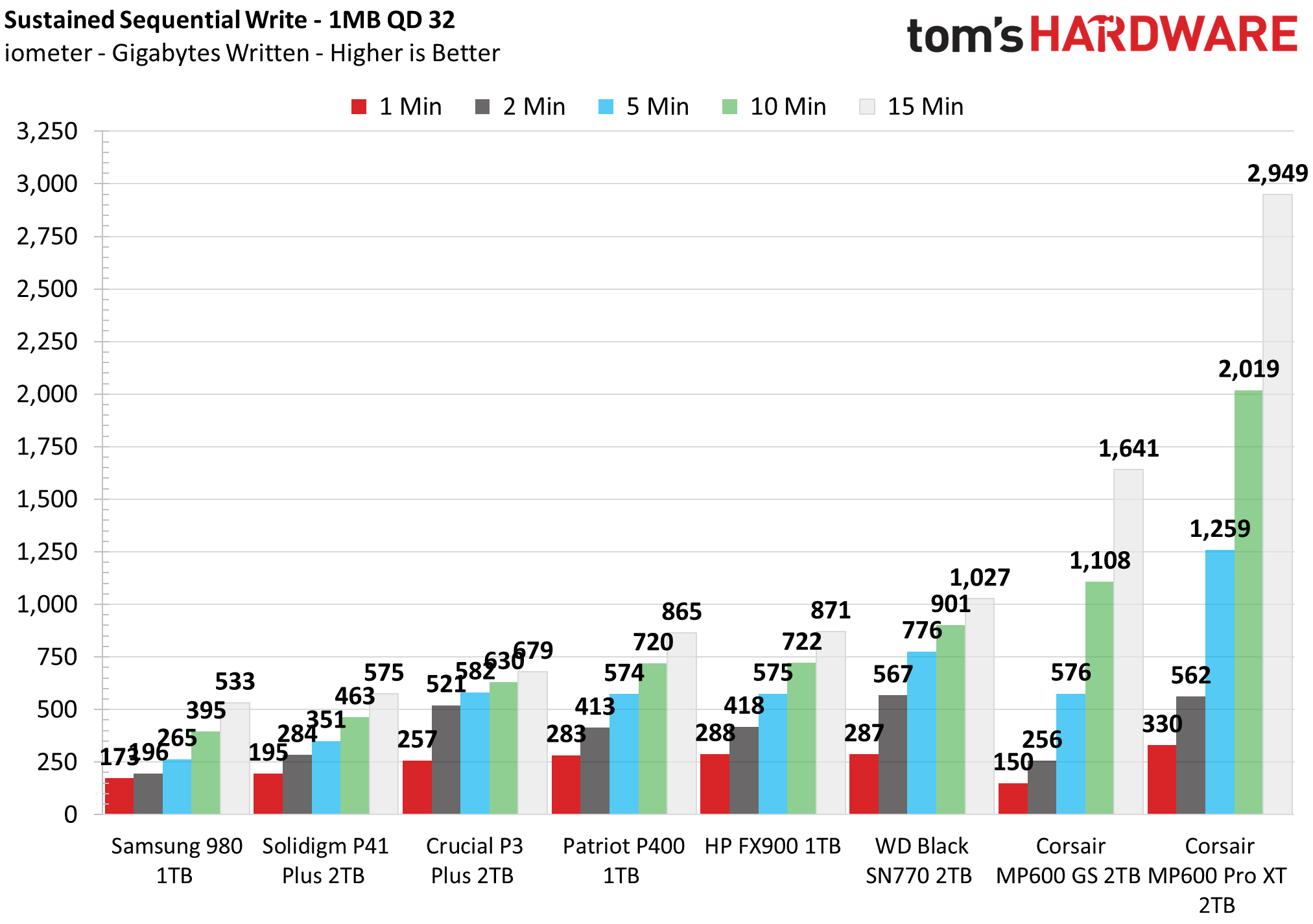
The 2TB MP600 GS writes at about 4.8 GBps for over 14 seconds in pSLC mode, with a cache of nearly 70GB. After that it writes at 1.78 GBps in TLC mode, which is about half the maximum speed of drives with this flash that use the Phison E18 controller, like the MP600 Pro XT. This is logical because the MP600 GS’s E21T controller has half the channels and therefore half the interleaving. This cache layout is different from the one on the FX900 and P400. On those drives, the cache is larger with an eventual decline to a slower folding mode after writing to TLC.
Only some E18-driven drives, like the MP600 Pro XT, opt for a smaller cache in return for better sustained performance. This design choice makes the MP600 GS unique, as it’s capable of very fast sustained performance. This will be better for certain prosumer tasks, but also will maintain performance with a fuller drive or after a lot of writes, scenarios you might face when using it as a caching drive. The cache is still large enough to manage random writes and, because it is smaller in absolute terms, it will maintain its size more consistently across the drive as it is filled.
The drive is capable of recovering some cache relatively quickly, which can help absorb random writes, but otherwise it does not seem in a hurry to move data over. This is a reasonable design decision because random writes tend to incur higher write amplification and are ideally cached in pSLC. Meanwhile typical usage, that is if the drive is used in a normal gaming computer, will likely offer plenty of idle time to restore the full cache. This potentially makes the MP600 GS more attractive than the alternatives in this price bracket for specific cases.
Power Consumption and Temperature
We use the Quarch HD Programmable Power Module to gain a deeper understanding of power characteristics. Idle power consumption is an important aspect to consider, especially if you're looking for a laptop upgrade as even the best ultrabooks can have mediocre storage.
Some SSDs can consume watts of power at idle while better-suited ones sip just milliwatts. Average workload power consumption and max consumption are two other aspects of power consumption, but performance-per-watt is more important. A drive might consume more power during any given workload, but accomplishing a task faster allows the drive to drop into an idle state more quickly, ultimately saving energy.
Temperatures are gauged at both idle and load states, via sensor and an infrared thermometer.
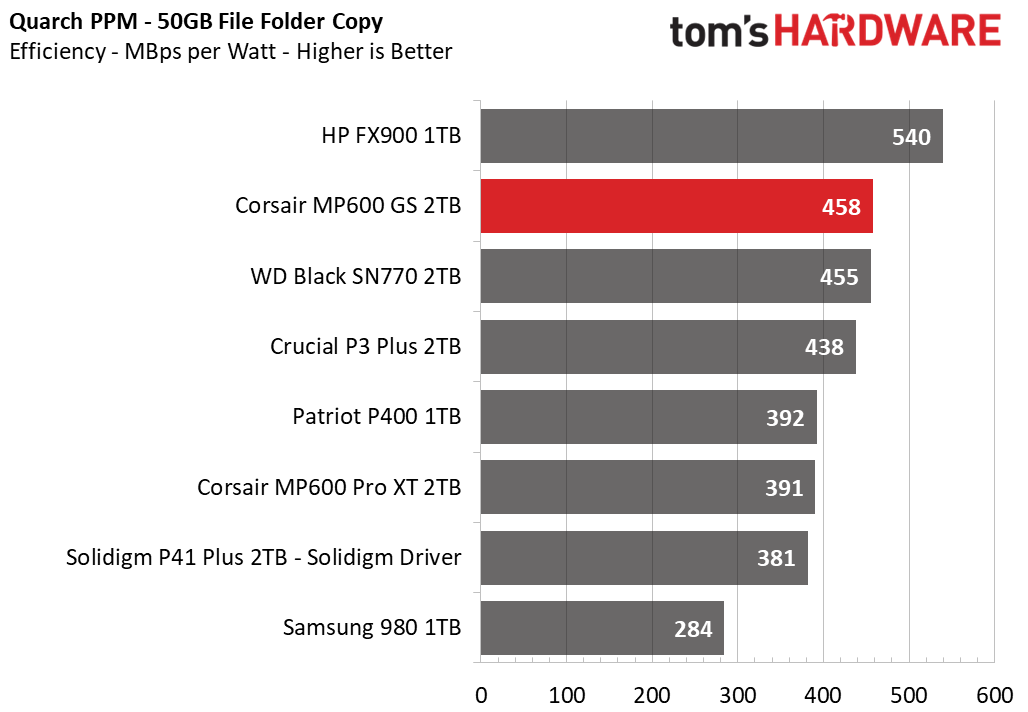
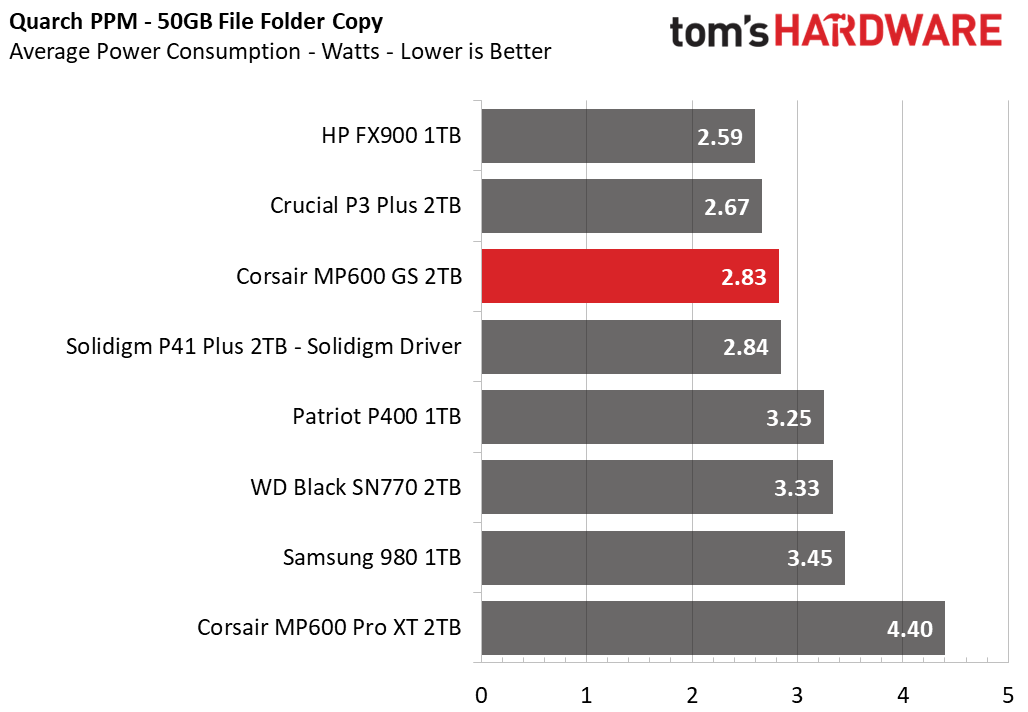


One great thing to come out of the age of new PCIe 4.0 DRAM-less controllers, as well as 176-layer flash, is the preponderance of efficient drives. The MP600 GS is no exception, beating everything here except the FX900. The SN770 and P3 Plus come pretty close, though.
Not shown are the Team MP44L and Silicon Power UD90, drives with similar hardware as the MP600 GS. These have displayed better efficiency in our prior testing, which is likely a consequence of differences in pSLC caching. It’s possible then, that a longer or more variable test would have the MP600 GS win out.
The 2TB MP600GS idled at around 40C. Under load it reached a maximum of 80C after approximately 600GB of writes. Write performance was not perfectly consistent past this point, demonstrating some dips. This drive could benefit from a heatsink if you are purchasing it for anything heavy duty, and in fact we would recommend that for some applications and hotter environments.
Test Bench and Testing Notes
| CPU | Intel Core i9-12900K |
| Motherboard | ASUS ROG Maximus Z690 Formula |
| Memory | 2x16GB Corsair Dominator DDR5 5600 CL36 |
| Graphics | Intel Iris Xe UHD Graphics 770 |
| CPU Cooling | Arctic Liquid Freezer II - 420 |
| Case | Streacom BC1 Open Benchtable |
| Power Supply | Corsair SF750 Platinum |
| OS Storage | Sabrent Rocket 4 Plus 2TB |
| Operating System | Windows 11 Pro |
We use an Alder Lake platform with most background applications such as indexing, windows updates, and anti-virus disabled in the OS to reduce run-to-run variability. Each SSD is prefilled to 50% capacity and tested as a secondary device. Unless noted, we use active cooling for all SSDs.
Conclusion
The Corsair MP600 GS is your run-of-the-mill mid-range PCIe 4.0 SSD. Its performance is not amazing but certainly good enough, as is its power efficiency. In some areas it does stand out, specifically with sustained writes. This can make it useful for some tasks and also more consistent in edge cases. It’s nice to see it available at up to 2TB, too, but it has stiff competition from excellent drives like the WD Black SN770. The Corsair name will only get it so far, as it doesn’t offer anything special like an option for a heatsink, although the 5-year warranty is decent.
Our recommendation would be to wait for a price drop, as this drive is at least competent within its class. There’s nothing wrong with similar offerings from Silicon Power or Team Group, but Corsair perhaps has a bit more cachet in some circles. This may or may not be deserved, although we would point out that the drive's cache design does suggest Corsair was aiming at a more reliable experience. This could make the MP600 GS more broadly appealing, but the differences in daily use would be negligible.
MORE: Best SSDs
MORE: Best External SSDs and Hard Drives
MORE: How We Test HDDs And SSDs
MORE: All SSD Content

Shane Downing is a Freelance Reviewer for Tom’s Hardware US, covering consumer storage hardware.
-
Alvar "Miles" Udell Amazing you left out the SK Hynix P31 Gold. Despite being PCIe 3.0 it matches this drive in overall performance and is cheaper.Reply
I wish that starting next year TH would include comprehensive charts like TechPowerUp does in their reviews and not just cherry pick some competitors, i mean you already have the results on record, so why not make a chart?
-
Udyr Reply
Then how a mediocre product worth a star or two shine all the way through a 3.5 score?Alvar Miles Udell said:Amazing you left out the SK Hynix P31 Gold. Despite being PCIe 3.0 it matches this drive in overall performance and is cheaper.
I wish that starting next year TH would include comprehensive charts like TechPowerUp does in their reviews and not just cherry pick some competitors, i mean you already have the results on record, so why not make a chart?
-
Alvar "Miles" Udell ReplyUdyr said:Then how a mediocre product worth a star or two shine all the way through a 3.5 score?
Because the star rating is subjective if you're not using a points system. It has higher idle power consumption than other drives, but it has good sustained write speed and generally middling performance in the other metrics. Based on the results, I'd say more like 2.5 stars because it is a PCIe 4.0 drive and should be measured by those standards, and it generally performs in the middle of the pack of the selected comparative drives with overall performance basically matching older, cheaper PCIe 3.0 drives. -
Udyr Reply
Therefore, mediocre. Nothing makes it special, especially for that price.Alvar Miles Udell said:Because the star rating is subjective if you're not using a points system. It has higher idle power consumption than other drives, but it has good sustained write speed and generally middling performance in the other metrics. Based on the results, I'd say more like 2.5 stars because it is a PCIe 4.0 drive and should be measured by those standards, and it generally performs in the middle of the pack of the selected comparative drives with overall performance basically matching older, cheaper PCIe 3.0 drives.